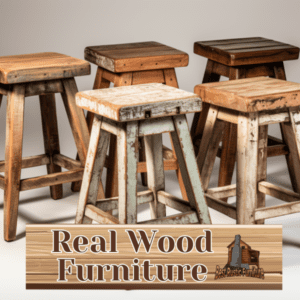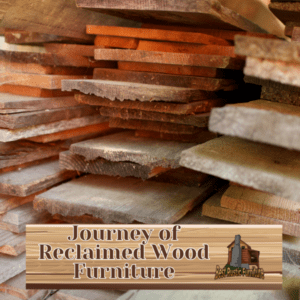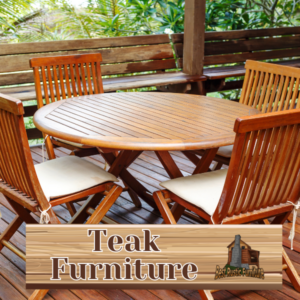
Are you tired of bland and lifeless interiors? Do you want to add depth and character to your living spaces? Look no further than natural textures. By incorporating elements such as wood, stone, clay, and mud, you can create a warm and inviting atmosphere that breathes life into any room.
From rustic charm to modern sophistication, natural textures offer endless possibilities for interior decor. In this article, we will explore the beauty and benefits of incorporating natural textures, and provide tips on how to use them to achieve your desired aesthetic.
Key Takeaways:
- Natural textures are a simple yet effective way to add depth and character to living spaces
- Incorporating elements such as wood, stone, clay, and mud can create a warm and inviting atmosphere
- Natural textures offer endless possibilities for interior decor, from rustic charm to modern sophistication
- By combining different textures, you can create a cohesive space that balances and harmonizes different elements
- Choosing sustainable and eco-friendly natural materials not only benefits aesthetics but also contributes to a healthier environment
Embracing Texture: The Beauty of Natural Textures
There’s something truly special about the way natural textures can transform a space. From the rough, organic feel of a stone fireplace to the smooth luxury of a leather couch, textures bring depth and character to a room in a way that few other design elements can. By incorporating natural textures into your decor, you can create a warm, welcoming environment that feels truly unique.
The beauty of natural textures lies in their ability to evoke a sense of the outdoors, even when you’re inside. Whether it’s the nod to a mountain lodge with a cozy wool throw or the sophistication of a marble countertop, natural textures bring the feeling of nature into your home. And, when you begin to build a collection of textures, you can create a cohesive space that feels organic and composed.
Building a Collection of Textures
When it comes to natural textures, the options are practically endless. From the classic appeal of wood accents and stone finishes to the modern edge of metal and glass, there’s a texture to suit any style. To create a unique and layered design, consider building a collection of natural textures throughout your home. Start small with a single focal point, such as a statement wall or piece of furniture, and build from there. Add in touches of other textures through accessories such as vases, pillows, and throws to create a cohesive and inviting space.
When choosing textures, consider different materials, colors, and patterns to create contrast and interest. The key is to find elements that work well together while still being distinct enough to stand out. Consider playing with scale, too; mixing small details with larger pieces can add depth and dimension to a room.
Incorporating natural textures into your decor is a wonderful way to add depth and character to a space. By building a collection of textures that suit your style, you can create a beautiful and unique home that feels warm, welcoming, and inviting.
Wood and Stone: Bringing the Outdoors In
When it comes to natural textures in decor, wood and stone are two materials that can truly bring the outdoors in. By incorporating these elements into your home, you can create a warm and welcoming space that feels connected to nature.
One way to bring wood and stone into your decor is through furniture. Wooden tables, chairs, and shelves can add a rustic charm to any room, while also providing a durable and long-lasting option. Stone can be incorporated through accent pieces like a stone fireplace or decorative stone tiles.
Another way to use wood and stone is by creating accent walls or flooring. A wooden accent wall can add warmth and texture to a room, while a stone floor can create a stunning natural element that is also easy to clean.
Not only do wood and stone add character to a space, but they are also very durable, making them a great investment for your home. They are timeless materials that can withstand the test of time and still look beautiful for years to come.
Overall, incorporating wood and stone into your decor can add a sense of natural beauty and warmth to your space. By bringing the outdoors in, you can create a space that feels welcoming and connected to nature.
Clay and Mud: Embracing Earthy Elements
When it comes to natural textures in decor, clay and mud may not be the first materials that come to mind. However, these earthy elements can add a unique touch to any space and provide a range of benefits beyond aesthetics.
Clay and mud are naturally occurring materials that have been used for centuries in pottery and building construction. Today, they are often used in interior design to bring a sense of grounding and connection to the earth.
One of the benefits of incorporating clay and mud textures in your home is their potential to improve indoor air quality. These materials can absorb and filter impurities in the air, contributing to a healthier living environment.
In terms of decor, clay and mud textures can be incorporated through paint, plaster, and tiles. For example, using a clay-based paint can add depth and texture to walls while also regulating moisture levels.
If you’re looking for a bolder statement, consider using mud plaster to create a feature wall or backdrop. Mud plaster creates a unique and rustic look that can add character to any space.
When it comes to furniture, clay and mud textures can be incorporated through Pottery and ceramics. Handmade pottery pieces can add a touch of warmth and authenticity to any room, while ceramic vases and bowls can be both functional and decorative.
Overall, incorporating clay and mud textures in your decor can add a unique touch to your space while also offering health benefits. Whether you opt for subtle touches or bold statements, these earthy elements can help create a warm and inviting atmosphere in any room.
Wallpaper: Transforming Walls with Texture
Walls are often overlooked when adding natural textures to interior spaces, but textured wallpaper can be a game-changer. It not only adds depth and character to a room but also creates a focal point, making the wall a standout feature. Wallpaper is an excellent option for renters or anyone looking for a temporary, non-permanent way to change up their space.
Natural textures in wallpaper can range from subtle patterns that mimic the look of linen or grasscloth to more pronounced designs that emulate the appearance of wood, stone, or brick. When selecting wallpaper, consider the current elements in the room, such as furniture and decor, and choose a design that complements or contrasts them.
The beauty of wallpaper is that it can transform any wall into a work of art. A single statement wall or a full-room application can drastically change the design of a space. Textured wallpaper is also a great way to add warmth to a room, creating a cozy and inviting atmosphere.
When it comes to installation, textured wallpaper can be a bit trickier than traditional wallpaper. It is always a good idea to hire a professional to ensure a seamless installation.
In conclusion, textured wallpaper is an excellent way to add natural textures to interior spaces, creating depth, and character in rooms. With a variety of natural-looking designs to choose from, it is easy to find a style that suits your taste and decor.
Choosing the Right Accessories: Enhancing the Natural Aesthetic
Choosing the right accessories is key to enhancing the natural aesthetic of a space. When it comes to natural textures, accessories can make or break the overall look and feel of the room.
Start by selecting accessories that complement the natural textures already in the space. For example, if you have a lot of wooden furniture, choose accessories like woven baskets or ceramic vases that add visual interest without overwhelming the wood.
Consider the size and scale of the accessories as well. Larger accessories can provide a statement piece, while smaller accessories can add subtle touches of texture throughout the room.
Get creative with your accessories! Natural textures offer a lot of opportunities for unique and interesting accessories. For example, consider a rug made from woven grass or a lamp with a base made from a piece of driftwood.
- Use accessories as an opportunity to bring in contrasting textures. For example, pair a rough-hewn wood table with a smooth ceramic vase or a woolen throw pillow.
- Remember that less is often more when it comes to accessories. A few well-chosen pieces can have a more significant impact than a cluttered collection.
Don’t be afraid to experiment with different arrangements and displays. Try clustering accessories of different textures together for a visually interesting vignette or adding a large statement piece to create a focal point in the room.
Ultimately, choosing the right accessories is all about finding a balance between form and function. By selecting accessories that enhance the natural textures in the room, you can create a space that feels unique and cohesive, with a touch of personality and character that reflects your personal style.
The Care and Maintenance of Natural Textures
When it comes to natural textures in decor, proper care and maintenance are essential to ensure that they retain their beauty and longevity. Different materials require different treatment and upkeep, but here are some general tips to keep in mind:
| Material | Care and Maintenance |
|---|---|
| Wood | Regularly dust and clean with a gentle cleaner to avoid scratches or damage. Avoid exposure to direct sunlight and excessive moisture, as it can cause warping or fading. |
| Stone | Wipe down with a soft, damp cloth and avoid using acidic or harsh cleaners that can erode the surface. Seal stone surfaces periodically to prevent staining or damage. |
| Clay and Mud | Avoid soaking or scrubbing with abrasive materials, as it can damage the porous surface. Keep them away from direct sunlight and humidity. |
| Textured Wallpaper | Spot-clean with a damp cloth and avoid using water or cleaners that can damage the material. Avoid exposure to direct sunlight and humidity. |
By following these simple tips, you can ensure that your natural textures continue to add depth and character to your spaces for years to come.
Creating a Cohesive Space: Combining Natural Textures
Combining different natural textures can add a unique and personal touch to any room. However, it’s important to keep the overall design and elements in mind to create a cohesive space. Here are some tips to help you achieve a harmonious look:
- Limit the number of textures in a room to avoid overwhelming the space.
- Choose complementary textures that enhance each other. For example, pairing a rough texture like natural stone with a soft texture like a woven rug can create balance.
- Consider the color and pattern of each texture and look for ways to tie them together. Using a common color scheme or repeating a pattern can help create unity.
- Don’t be afraid to mix textures within a single piece of furniture, like a chair with a woven seat and a wooden frame.
- Use natural textures to highlight focal points in the room, such as a fireplace or a statement piece of artwork.
By combining natural textures thoughtfully, you can create a space that is visually interesting, relaxing, and welcoming. Experiment with different textures and elements to find the perfect combination for your room.
The Benefits of Natural Textures: Beyond Aesthetics
Integrating natural textures into interior decor not only creates a visually appealing space, but it also offers a host of other benefits that go beyond aesthetics. Natural textures are a great way to promote a healthier indoor environment, and they also contribute to reducing the impact of your space on the environment.
Benefits for Your Health
Many natural textures, such as wood and stone, have been known to offer therapeutic effects, such as reducing stress levels and promoting relaxation. Natural textures also tend to have a lower level of toxins, promoting a healthier indoor air quality. Incorporating natural textures into your surroundings can help reduce allergies, respiratory issues, and headaches, making your space a more tranquil and calming environment.
Environmental Benefits
Using natural textures in interior design not only beautifies your space but it also encourages sustainable living. Natural materials, such as bamboo or reclaimed wood, can be sustainable and eco-friendly options, contributing to the reduction of carbon footprint. By opting for natural textures, you are promoting a healthier ecosystem and making a positive impact on the environment as a whole.
Creating a Space with Natural Textures
Integrating natural textures into your space can be as simple as incorporating wooden furniture or adding a stone fireplace. These subtle additions can have a significant impact on the overall feel of the room. Choosing sustainable materials ensures that you’re making a conscious decision about the health of your indoor environment while also making a positive impact on the environment as a whole.
Overall, the benefits of natural textures go far beyond aesthetics, providing therapeutic benefits and promoting a healthier indoor environment. By incorporating natural textures into interior design, you’re also making a decision that promotes sustainability and eco-friendliness.
Conclusion
Incorporating natural textures into your interior decor is a great way to add depth and character to your space. By embracing the beauty of wood, stone, clay, and mud, you can bring the outdoors into your home and create a healthier indoor environment. Using textured wallpaper and the right accessories can enhance the natural aesthetic and provide a cohesive look to your room. It’s important to care for and maintain these materials properly to ensure they retain their beauty and longevity. Beyond aesthetics, natural textures have many benefits, including their positive impact on health and the environment. Choosing sustainable and eco-friendly materials is crucial in creating a space that is both beautiful and responsible. Experiment with different textures and combinations to find your perfect style. By following these tips and embracing natural textures, you can create a space that is not only visually appealing but also promotes wellness and sustainability.
FAQ
What are natural textures in decor?
Natural textures in decor refer to the use of materials and elements that are derived from nature, such as wood, stone, clay, and mud. These textures add depth and character to spaces, creating a warm and inviting atmosphere.
How can natural textures enhance the beauty of a space?
Natural textures have a unique ability to transform a space by adding visual interest and tactile appeal. They bring a sense of warmth, authenticity, and connection to nature, which enhances the overall design aesthetic.
How can I incorporate wood and stone into my decor?
Wood and stone can be incorporated into decor through furniture pieces, such as wooden tables or stone countertops. You can also use them as accent elements, such as a stone fireplace or wooden wall paneling, to bring the outdoors in and create a natural ambiance.
What are the benefits of using clay and mud textures in decor?
Clay and mud textures have a natural and earthy appeal, and they can contribute to a healthier indoor environment. These materials have moisture-absorbing properties and can regulate humidity levels, improving air quality and creating a more comfortable atmosphere.
How can I use textured wallpaper to add depth to my walls?
Textured wallpaper is a great way to introduce natural textures to your walls. You can choose from a variety of patterns and designs, such as faux wood or stone textures, to create a visually appealing and unique backdrop in any room.
What types of accessories can enhance natural textures?
Accessories like woven baskets, ceramic vases, and natural fiber rugs can complement natural textures and enhance the overall aesthetic. Choose items that echo the organic and earthy qualities of the textures you have incorporated in your decor.
How do I care for natural textures?
The care and maintenance of natural textures depend on the specific material. For wood, regular dusting and periodic polishing with a wood cleaner are recommended. Stone surfaces can be cleaned with a mild soap and water solution. Clay and mud textures may require occasional resealing to maintain their integrity.
How can I combine different natural textures in one space?
To create a cohesive space, consider the balance of textures and choose materials that complement each other. For example, you can pair a stone fireplace with wooden furniture and add clay pottery for a harmonious combination of natural textures.
What are the benefits of using natural textures in decor?
Using natural textures in decor not only adds aesthetic appeal but also has other benefits. They can create a calming and soothing environment, contribute to a more sustainable and eco-friendly space, and promote overall well-being and connection with nature.






